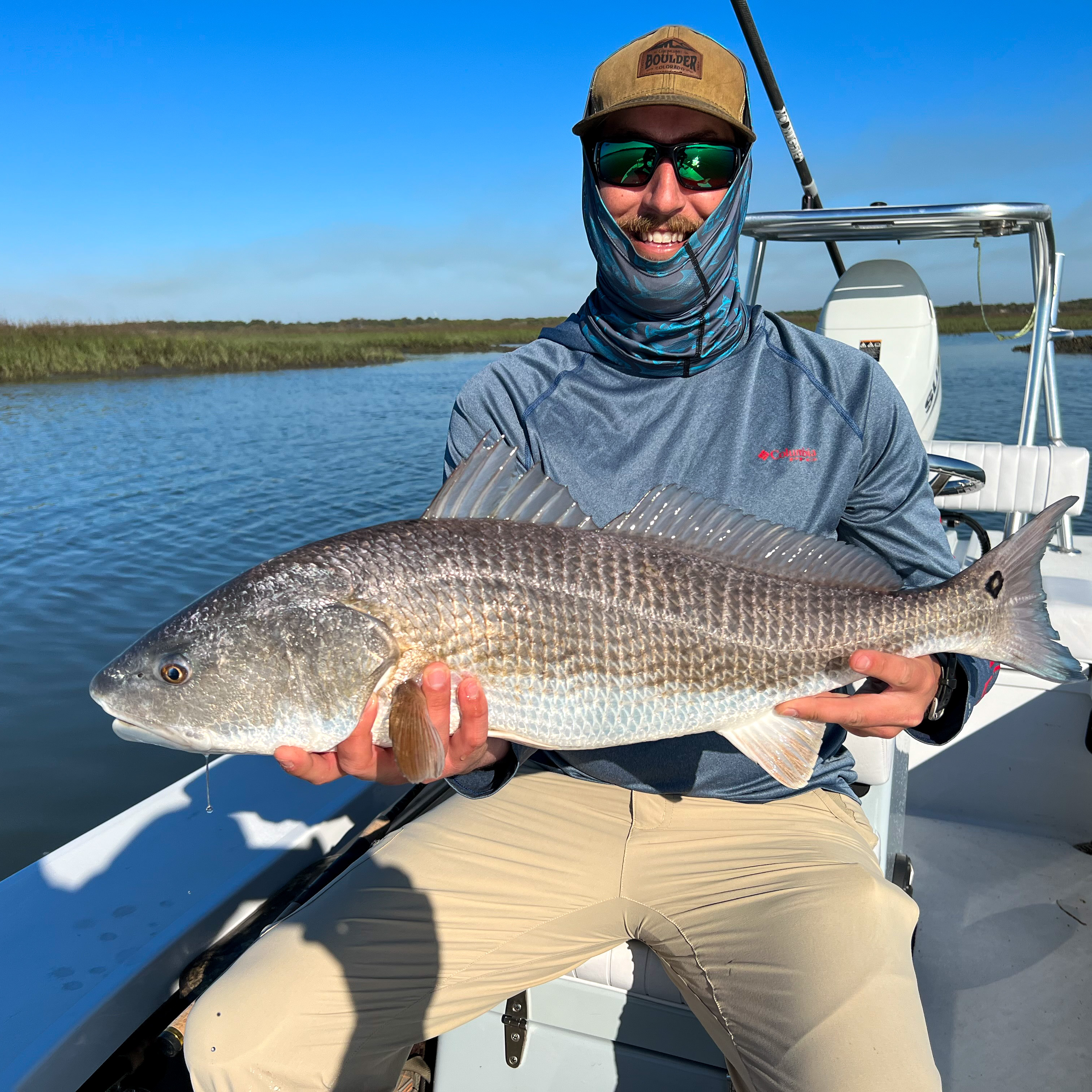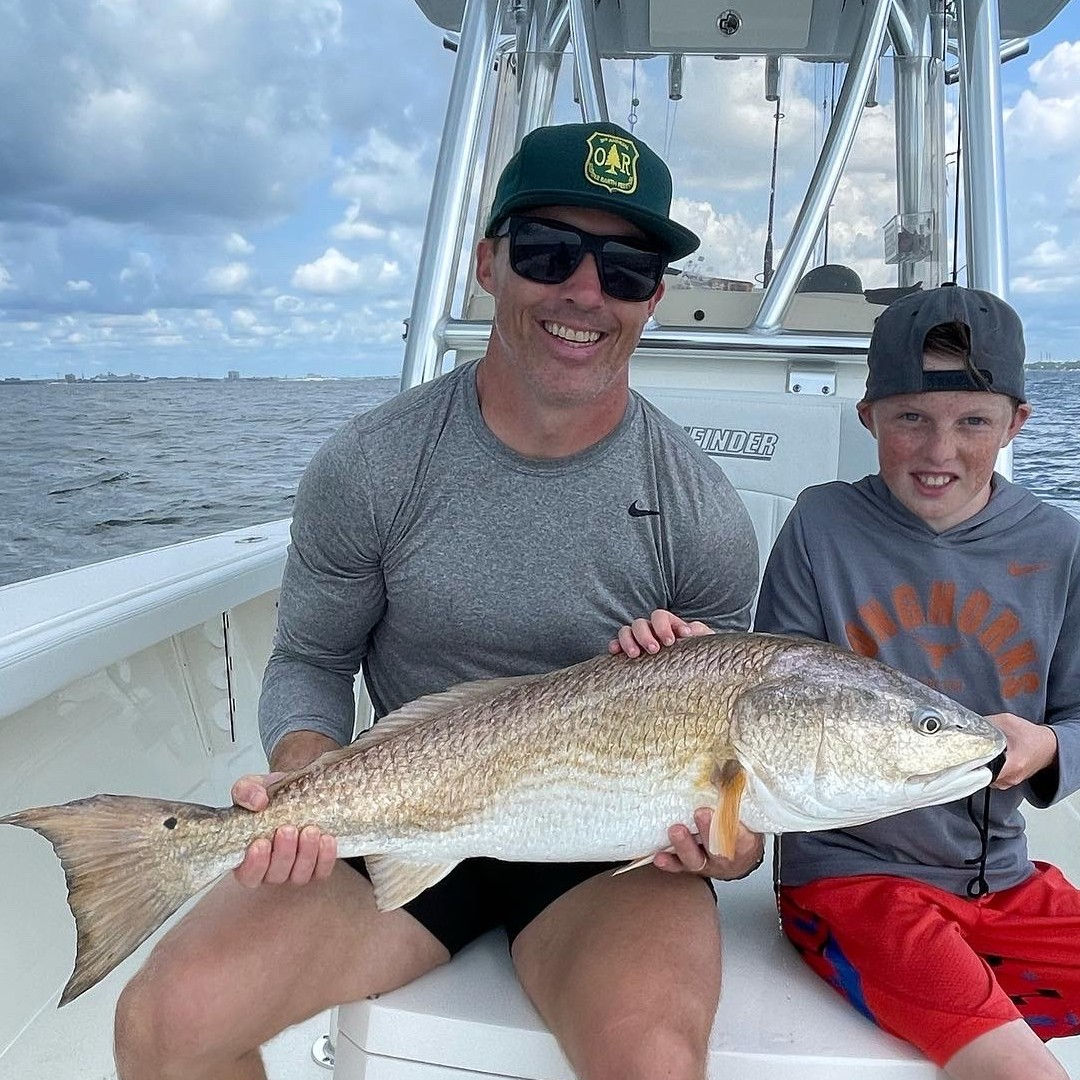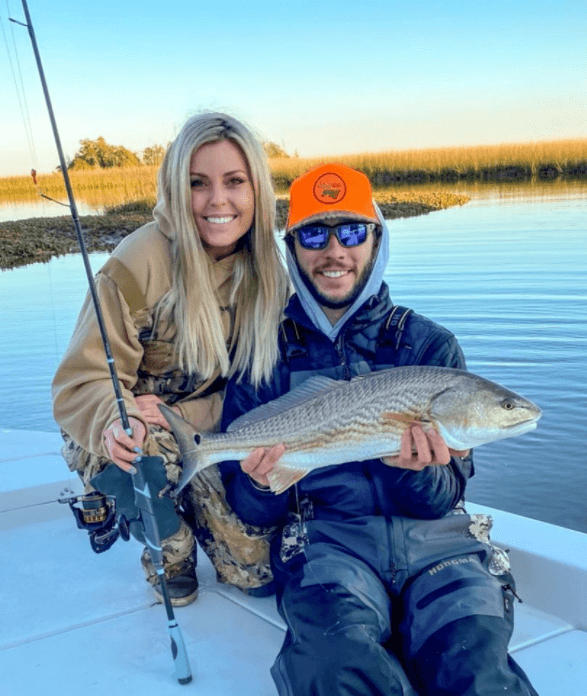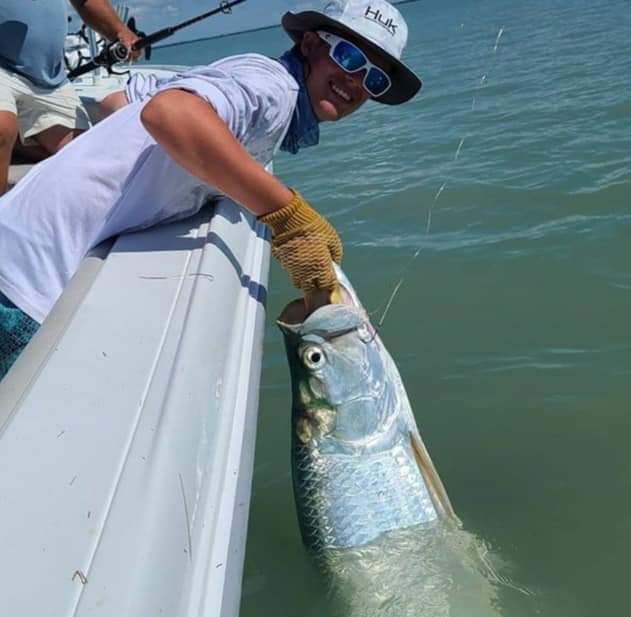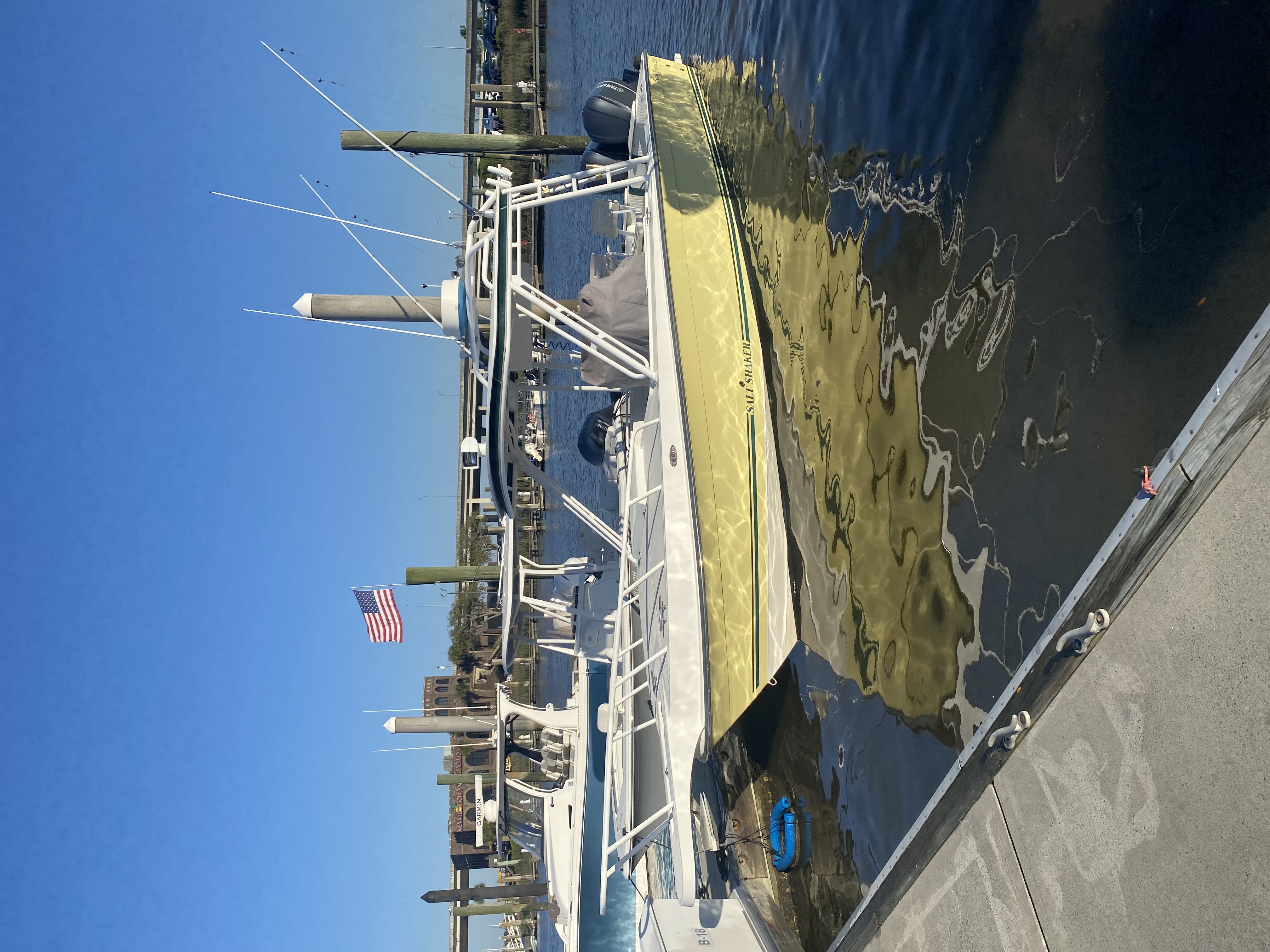Inshore, River Fishing in Charleston
4-6 Hour Inshore Fishing Trip
Inshore, River Fishing in Charleston
Inshore Fishing II
Inshore, River Fishing in Charleston
4 Hour Inshore Fishing Charter
Inshore, River, Flats in Charleston
Reds On The Fly And Light Tackle
Charleston Jetty Trip
Inshore, Nearshore, Jetty in Charleston
6 HR Reef/Nearshore/Jetties/Harbor
Inshore, River Fishing in Charleston
Inshore Fishing - 24’ Blazer Bay
Inshore, Nearshore, Jetty in Charleston
4 HR Inshore/Harbor/Jetties PM
Inshore, River, Flats in Folly Beach
3-6 Hr – Inshore Trip
Inshore, Nearshore, Jetty in Charleston
4 HR Inshore/Harbor/Jetties AM
We started Captain Experiences to make it easy to book fishing and hunting guides around the world. With over 2,000 Damn Good Guides, our platform makes finding and booking a trip seamless. Head here to check out our trips.
Charleston, South Carolina, is renowned for its abundant fishing opportunities, offering anglers a chance to experience diverse marine life in picturesque settings. Whether you're a seasoned angler or a novice, it's essential to familiarize yourself with the rules and regulations governing recreational fishing to ensure sustainable practices and protect the marine ecosystem. In this blog, we'll guide you through the key fishing rules and regulations in Charleston.

Licensing Requirements in Charleston, SC
Before casting your line in Charleston's waters, obtaining the necessary fishing license is crucial. South Carolina requires anglers aged 16 and older to possess a valid fishing license, which can be obtained online through the South Carolina Department of Natural Resources (SCDNR) website or at authorized retailers. Various types of licenses are available, including annual, 14-day, and 3-day options for both residents and non-residents. Additionally, special licenses are available for seniors and military personnel. Keep your fishing license with you at all times while fishing to avoid any legal issues.
Bag and Size Limits in Charleston, SC
To protect fish populations and ensure sustainable fishing, bag and size limits are enforced in Charleston. Bag limits refer to the number of fish an angler can harvest within a single day, while size limits specify the minimum size at which a fish can be legally kept. Here are some specific bag and size limits for common fish species in Charleston:
Red Drum (Redfish)
The bag limit is 3 per day, with a slot size of 15-23 inches. One fish over 23 inches may be kept per person per day.
Spotted Seatrout (Speckled Trout)
The bag limit is 10 per day, with a size limit of 14-23 inches. One fish over 23 inches may be kept per person per day.
Flounder
The bag limit is 5 per day, with a minimum size limit of 15 inches.
Black Drum
The bag limit is 5 per day, with a size limit of 14-27 inches. One fish over 27 inches may be kept per person per day.
Sheepshead
The bag limit is 10 per day, with a minimum size limit of 14 inches.
Protected Species and Closures
Certain fish species in Charleston's waters are protected due to conservation concerns or legal restrictions. It’s essential to familiarize yourself with the protected species list to avoid unintentional harm. Protected species and those with specific regulations include:
Tarpon
Special regulations apply, including mandatory reporting of any tarpon caught.
Sawfish
All sawfish are protected, and any catch must be released immediately.
Goliath Grouper
Harvesting this species is prohibited; any incidental catch must be released immediately.
Gear Restrictions
Charleston has regulations governing fishing gear to prevent excessive damage to the environment and maintain a level playing field for anglers. Some common gear restrictions include:
Fishing Lines
Anglers are limited to the use of two fishing lines.
Bait
Certain types of bait, such as live baitfish, may have restrictions to prevent the introduction of invasive species.
Techniques
Some areas may prohibit the use of gill nets, trammel nets, and other specific types of nets to protect fish populations.
Catch-and-Release Best Practices
Engaging in catch-and-release fishing is an excellent way to contribute to conservation efforts in Charleston. However, it's essential to follow best practices to minimize stress on the fish and increase their chances of survival. Use proper handling techniques, such as wetting your hands before handling the fish, avoiding excessive contact with their delicate scales, and using barbless hooks. Release fish gently and promptly back into the water, ensuring they have fully recovered before swimming away.
Reporting and Recording

Charleston encourages anglers to report their catches and contribute to scientific research and conservation efforts. Some fish species may require anglers to report their catch, either through specific programs or by contacting local authorities. By sharing your fishing data, you can contribute to the understanding of fish populations, habitat health, and the overall management of the area's resources.
For more information, check out everything to know about fishing in charleston.
Gavin Abbott
Updated on November 7, 2024

October 26, 2020

May 13, 2024

June 22, 2022

November 7, 2023

June 3, 2021
Related Articles
July 26, 2024
June 26, 2024
June 12, 2024
Featured Locations
- Fishing Charters Near Me
- Austin Fishing Guides
- Biloxi Fishing Charters
- Bradenton Fishing Charters
- Cabo San Lucas Fishing Charters
- Cancun Fishing Charters
- Cape Coral Fishing Charters
- Charleston Fishing Charters
- Clearwater Fishing Charters
- Corpus Christi Fishing Charters
- Crystal River Fishing Charters
- Dauphin Island Fishing Charters
- Daytona Beach Fishing Charters
- Destin Fishing Charters
- Fort Lauderdale Fishing Charters
- Fort Myers Fishing Charters
- Fort Walton Beach Fishing Charters
- Galveston Fishing Charters
- Gulf Shores Fishing Charters
- Hatteras Fishing Charters
- Hilton Head Fishing Charters
- Islamorada Fishing Charters
- Jacksonville Fishing Charters
- Jupiter Fishing Charters
- Key Largo Fishing Charters
- Key West Fishing Charters
- Kona Fishing Charters
- Lakeside Marblehead Fishing Charters
- Marathon Fishing Charters
- Marco Island Fishing Charters
- Miami Fishing Charters
- Montauk Fishing Charters
- Morehead City Fishing Charters
- Naples Fishing Charters
- New Orleans Fishing Charters
- New Smyrna Beach Fishing Charters
- Ocean City Fishing Charters
- Orange Beach Fishing Charters
- Panama City Beach Fishing Charters
- Pensacola Fishing Charters
- Pompano Beach Fishing Charters
- Port Aransas Fishing Charters
- Port Orange Fishing Charters
- Rockport Fishing Charters
- San Diego Fishing Charters
- San Juan Fishing Charters
- Sarasota Fishing Charters
- South Padre Island Fishing Charters
- St. Augustine Fishing Charters
- St. Petersburg Fishing Charters
- Tampa Fishing Charters
- Tarpon Springs Fishing Charters
- Venice Fishing Charters
- Virginia Beach Fishing Charters
- West Palm Beach Fishing Charters
- Wilmington Fishing Charters
- Wrightsville Beach Fishing Charters









